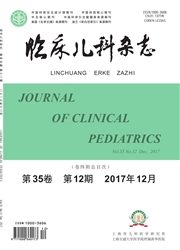

 中文摘要:
中文摘要:
目的了解临床诊断为软骨发育异常类疾病患儿及其家系成员的成纤维细胞生长因子受体3(FGFR3)基因突变情况。方法应用聚合酶链式反应(PCR)和DNA测序技术分析7例患儿及其家系成员的FGFR3基因突变热点分布区域第10外显子以及第13外显子的序列。结果4例患儿存在FGFR3基因第10外显子c.1138G〉A(p.Gly380Arg)杂合突变,确诊为软骨发育不全(ACH),其父母未见突变。1例症状较轻微的患儿及其有同样表型的母亲存在FGFR3基因第13外显子c.1620C〉A(p.Asn540Lys)杂合突变,确诊为软骨发育低下(HCH)。2例患儿未发现以上两个位点的突变。结论检测FGFR3基因第10、第13外显子可诊断大部分ACH或HCH病例,但少数患儿尚有必要检测FGFR3基因其他区域及其他相关基因以明确诊断。
 英文摘要:
英文摘要:
Objective To screen the sequence of fibroblast growth factor receptor 3 (FGFR3) genes in children with dys- chondroplasia and their family members for searching the mutations. Methods The sequence of exon 10 and exon 13 in muta- tion hot spot region of FGFR3 gene in seven families was analyzed using polymerase chain reaction (PCR) and DNA sequenc- ing technology. Results The c.1138G〉A missense mutation in exon 10 was found in 4 probands who were diagnosed as achon- droplasia (ACH), while this mutation was absent in their parents. The c.1620C〉A missense mutation in exon 13 was found in one girl and her mother who both were diagnosed as hypochondroplasia (HCH) with mild symptoms. Neither mutation men- tioned above was found in the other two probands. Conclusions Through detecting the mutation in exon 10, exon 13 of FGFR3 gene, most patients of ACH or HCH can be finally diagnosed. However, it is necessary to perform the mutation screening on the other zones ofFGFR3 gene and on other related genes for a few cases.
 同期刊论文项目
同期刊论文项目
 同项目期刊论文
同项目期刊论文
 期刊信息
期刊信息
